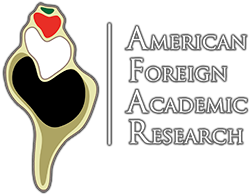AFAR's Point Person in Portugal: Getting to Know Site Director, Inês Vaz Pinto
Inês (second from left) and her team: Ticha, Patrícia and Filipa.
Portugal is a small country of 10 million friendly people known for its diverse regions, including coastal areas, mountainous regions, and the plains. With breath-taking landscapes, amazing beaches and an incredible amount of historical monuments, it’s one of the oldest countries in Europe. It’s also the place that Inês Vaz Pinto calls home and where she discovered her love of history which led her to a career in Archaeology. Today, in the tourist resort town of Tróia, she serves as Site Manager where she conducts field research, enhancements and conservation of this historic site. For two weeks each summer, AFAR students work alongside Inês and her team to uncover pieces of Portugal’s past.
Tell us how your involvement with AFAR began? It all started in January of 2017, when I received a very nice e-mail from an unknown person on behalf of AFAR, Catalina Urquijo. She told me about the field work that students conduct each year and said that AFAR might be interested in having a summer program in Tróia. I met with Catalina, then later Mat Saunders, and realized we would make a great team.
Tell us about your background as an Archaeologist and Site Director? I was interested in Archaeology since I was 13 or 14, but it did not seem to have a professional outcome. When I went to college, I first studied History – which I still have a passion for to this day. Then, as a student, I had the opportunity to go on an archaeological excavation to a Roman site, and I fell in love with Archaeology. After graduation, I completed a Master program in Classical Archaeology at the University of Arizona and participated in several excavations in Cyprus and Italy. When I came back to Portugal I started teaching at a University, I did my PhD and I was a professor for 20 years at Universidade Lusíada, in Lisbon. All of this lead me to be the Site Director of the Roman Ruins of Tróia in 2006.
What is your favorite memory from the recent AFAR project? This year I really enjoyed the recovery of mosaic fragments that had been thrown inside two of the fish-salting vats, perhaps from the remodeling of a floor of a house. Mosaics are made of many, many small cubic stones set on a mortar base designing patterns.
Inês examining a new discovery among the Roman ruins.
At first, we had two conservator-restorers that stabilized the fragments with glaze and a consolidant, like a glue, to keep the small pieces together. But they had to leave, and two students from AFAR, Sidney and Cameron, learned the process and become the saviors of the mosaics, from the drawing in situ, to the consolidation, the lifting and the proper storing in the storeroom. I was amazed how well they learned the process and performed it! One day those pieces of mosaic will be exposed in a museum. (You can read Sidney’s blog about these findings here).
What has been the most rewarding thing about your life as an Archaeologist? The most attractive factor is definitely the research, the whole research process, from the discovery to the interpretation. You never know what you are going to find, the results are usually very different from our expectations, and it is a great challenge to understand your finds. The team work necessary in archaeological work has also been very rewarding and the open-air work, usually in beautiful places, has been amazing.
As an archaeologist, how do you think working on a project like AFAR as a teen would have impacted your path? I had a cousin whose grandfather was an archaeologist and when I was 16, I asked to go on one of his excavations. But he did not accept minors (under 18) and I was very disappointed! I believe that if I had the chance to participate in an excavation at 16, I would have known much earlier my professional path.
What would you be doing to if you weren't an Archaeologist? I thought very seriously of studying psychology, my final decision was between psychology and history, but I would not have been happy as a
Psychologist. I think that if I had not been an archaeologist, I would have been an historian, since I love researching in libraries and archives, reading old documents and I love writing. But I could also have been a cook, or a carpenter… since I love doing things with my hands.
Tell us something that very few people know about you? Very few people know how much I like fishing! I used to go with my father as a child. Not much time for that today, only when I am on holidays with my family.
Which archaeological site (other than AFAR) would you love the opportunity to work at? I would love to work at Villa Romana del Casale near Piazza Armerina, in Sicily, a sumptuous Roman villa with beautiful mosaics which is World Heritage. There are many guesses about the owner of the villa, perhaps a relative of the emperor or a governor of Sicily, but no definite answer.
If you had to pick one nonessential item when working on a project site, what would it be? I would take a pillow to sit comfortably when it is time to stop and fill in the stratigraphic unit files.


